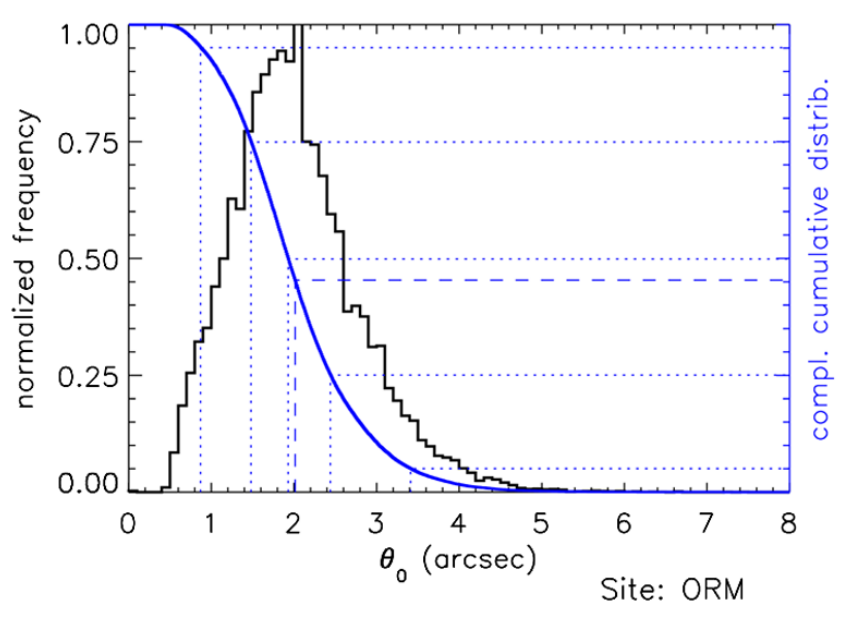The isoplanatic angle (θ0) is the angle for which the variance of the differences of the phase aberrations suffered by two rays of light passing closely through the atmosphere from different points (or sources) in the sky, is still small (typically less than 1 rad2). The fluctuations are due to the different turbulence patches they are finding.
The θ0 is directly related to the maximum angular separation between the science object and the reference guide star in adaptive optics systems. It is not only dependent on the total amount of turbulence (i.e. seeing), but also on the height at which the turbulence is located. The higher the turbulent layer, the larger the drop of θ0.
Due to the dependence of the turbulence height on θ0, the techniques to retrieve it should be capable of obtaining the vertical distribution of turbulence. For example the gSCIDAR technique, MASS or radiosounding profiles, among others.
Roque de los Muchachos Observatory (ORM)
Garcia-Lorenzo et al, 2011 obtained mean and median θ0 were 2.4" and 2.2" ms, respectively from 211 nights and near 200k profiles, covering 5 years of gSCIDAR turbulence profiles (note: these results are using the "low resolution" turbulence profiles, that reach the highest layers on the atmosphere).
Vazquez-Ramio et al (2012) performed a similar analyses using ~600 hours (ranging one full year) of night time observations of turbulence profiles using MASS. The average and median θ0 were 2.0" ms and 1.9", respectively.

An early campaign (Vernin and Muñoz-Tuñon, 1994) at the ORM using local radiosondes (6 flights) gave a mean θ0 of 1.3" and median of 1.4".
Teide Observatory (OT)
Garcia-Lorenzo et al, 2011 obtained mean and median θ0 3.1" and 2.8", respectively from 153 nights and more than 90k profiles, covering 5 years of gSCIDAR turbulence profiles (note: these results are using both "low" and "high" resolution turbulence profiles; the high resolution profiles may lose the highest layers)
